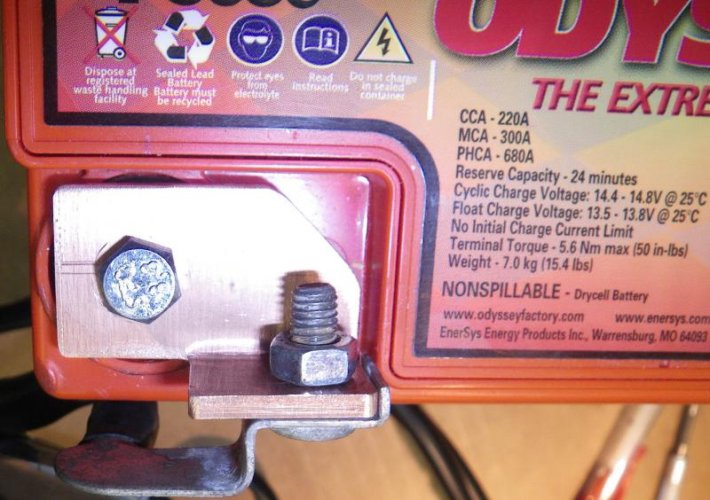Update with Apologies to Westco!
So I ordered the Odyssey and just before I was going to take the Westco to the dump, I checked the voltage. 12.6V! Turns out that it was a bad terminal connection that made the battery "play dead." The evidence was strong for a dead battery -- ignition light would go on but drew enought power that the LED clock would go dead; clicking noise when turned to the on position; Battery Tender Jr wouldn't get a green light; all these problems solved when I reinstalled the Westco without the positive terminal extension bracket. (What is that for, anyway?)
So now I have a brand new Odyssey to sell - any suggestions as to where to list it? I paid $110 plus $6 for male terminal plugs -- asking $90 with free shipping.
$20 seems a fair price for my ignorance!
I am not an expert so can't add much to this debate except that the Westco 12V20P should have lasted longer than 9 months of use over 16 calendar months in an attached garage while attached to a Battery tender Jr during the winter. My final ride was in November 2015 and my on-board voltmeter -- which was attached directly to the terminals was still registering "green" -- at that time. After coming off the charger last weekend, it powered two starting attempts and then died. The warranty was one year so I'm out of luck.
Based on the reviews here and elsewhere I will try the Odyssey. My bike is a 2004 R11050RT with 30k miles.
Thanks to all for the input and comments.
So I ordered the Odyssey and just before I was going to take the Westco to the dump, I checked the voltage. 12.6V! Turns out that it was a bad terminal connection that made the battery "play dead." The evidence was strong for a dead battery -- ignition light would go on but drew enought power that the LED clock would go dead; clicking noise when turned to the on position; Battery Tender Jr wouldn't get a green light; all these problems solved when I reinstalled the Westco without the positive terminal extension bracket. (What is that for, anyway?)
So now I have a brand new Odyssey to sell - any suggestions as to where to list it? I paid $110 plus $6 for male terminal plugs -- asking $90 with free shipping.
$20 seems a fair price for my ignorance!






